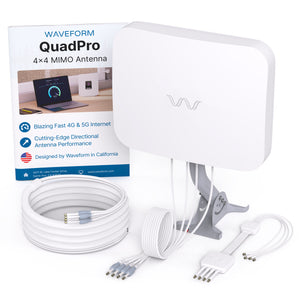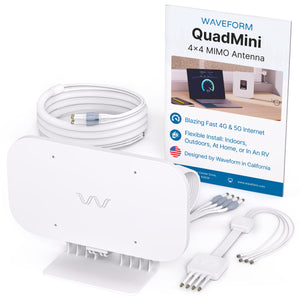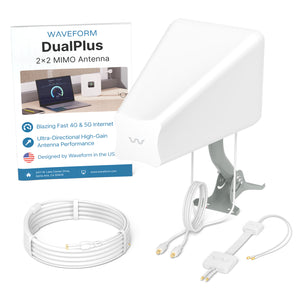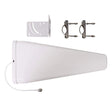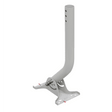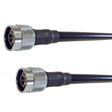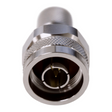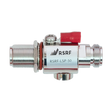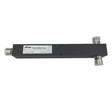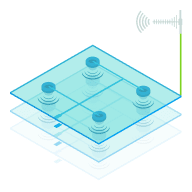Across the Commonwealth, connectivity challenges look very different in a Scranton manufacturing plant than in a Lehigh Valley fulfillment center or a Marcellus Shale well pad. Thick masonry from early-20th-century mills, vast outdoor yards, and security requirements around regulated industries all make reliable WiFi nearly impossible and carrier LTE both costly and inconsistent. One vivid example is the cluster of one-million-square-foot distribution warehouses stretching along I-78 where forklifts and autonomous robots cannot afford dropped sessions as they roam between indoor aisles and outdoor docks.
Why Pennsylvania Facilities Are Turning To Private 5G
Pennsylvania is still a heavy-industry state but it has diversified into life sciences, logistics, higher education, and energy. Each sector has sites that challenge traditional wireless.
- Manufacturing and steel finishing lines in Pittsburgh depend on real-time quality-control cameras and automated guided vehicles that require deterministic latency.
- Pharmaceutical cleanrooms in Montgomery County need interference-free spectrum and airtight security for FDA data.
- The Port of Philadelphia demands yard-wide coverage so container cranes and handheld scanners stay online without roaming fees.
- Natural-gas operations in the northeast tier sit miles from any fiber backhaul yet must stream SCADA data continuously.
Private 5G solves these problems by combining licensed Citizens Broadband Radio Service (CBRS) spectrum with cellular-grade radios that operate at far higher power than WiFi access points. A single indoor radio covers tens of thousands of square feet and an outdoor sector antenna can blanket well over a square mile. The result is fewer cables, less interference, and far more predictable throughput.
For deeper dives into how private networks help your peers in major Pennsylvania metros you can read our pages on Philadelphia and Pittsburgh.
Local Conditions That Favor Private Cellular
-
Building Materials: Many sites still use brick, stone, and thick steel beams left from previous industrial eras. Those walls soak up 2.4 GHz and 5 GHz WiFi signals. CBRS at 3.5 GHz propagates farther and penetrates dense materials better.
-
Four-Season Weather: Pennsylvania summers are humid and winters bring lake-effect snow. Outdoor WiFi radios derate under temperature swings, while carrier-grade 5G eNodeBs are designed for -40 °F to 131 °F operation.
-
Regulatory Landscape: The state has aggressive cybersecurity mandates for healthcare and energy operators. A private network keeps data on-prem and allows full control of Quality of Service and encryption keys, something neither WiFi roaming nor public LTE can deliver.
How Private 5G Compares To WiFi 7 And Public Cellular
WiFi remains perfect for carpeted offices but breaks down in high-density or harsh environments where you need:
- Dedicated Spectrum. CBRS channels are lightly licensed by the FCC so your site does not compete with the coffee shop next door.
- Mobility Without Roaming. Client devices move between cells without re-authentication delays common in WiFi.
- Higher Uplink Budgets. Cameras and sensors often send more data than they receive. 5G Time Division Duplexing can allocate extra capacity to the uplink.
- Predictable Latency. Deterministic scheduling lets your MES or SCADA platforms know round-trip delay will stay under 20 ms.
Compared to public 5G from AT&T, Verizon, or T-Mobile, a private network eliminates per-SIM data charges and the congestion that hits during shift changes or game days. You also gain the ability to integrate traffic directly into your LAN or SD-WAN, enforce corporate firewall rules, and keep sensitive data out of the cloud.
If you would like a broader technical introduction, our free Private Networks Guide explains spectrum, cores, and devices in plain language.
Our End-To-End Deployment Process
-
Rapid Site Snapshot
Send us a floor plan or KMZ, the square footage, and a device count. Within 72 hours we return a preliminary RF heatmap, equipment list, and budget range.
-
Detailed RF Design
Once you green-light the concept, our propagation engineers build a full 3D model, select the best vendor mix from Celona, Baicells, Airspan, Pente, and others, and produce a fixed-price proposal with guaranteed coverage.
-
Turnkey Installation
Waveform project managers coordinate electricians, riggers, and fiber teams. We deliver day-one coverage with pre-configured SIMs or eSIMs so your scanners and gateways attach immediately.
-
Device Integration
Need Cradlepoint routers on forklifts, Zebra handhelds in the warehouse, or fixed cameras on light poles? We supply and stage them so every endpoint is operational when we hand over the network.
-
Ongoing Support
Our cloud dashboard monitors KPIs in real time and our U.S.-based NOC resolves alarms 24 × 7 under an SLA tailored to your site's uptime targets.
Proven Wireless Experience In The Region
Although private cellular is new, Waveform has delivered complex wireless systems in the Northeast for years. A recent project for a professional sports practice facility outside New York City required omnipresent coverage for IP video and coaching analytics across multiple buildings and outdoor fields. The environment is strikingly similar to a large university campus in State College or an industrial park in Altoona: mixed construction materials, large open spaces, and strict security requirements. Leveraging that experience, we know how to meet Pennsylvania's site logistics and union regulations without surprises.
Typical Pricing
Indoor private 4G or 5G networks usually fall between $1.00 and $2.50 per square foot turnkey, which covers radios, core software, installation, SIMs, and first-year support. Outdoor deployments are even more cost-effective. In flat terrain, one or two macro-grade CBRS radios can create a 1.5-mile-radius coverage bubble for roughly $100,000, enabling entire logistics campuses or energy sites to go wireless without trenching dozens of access-point cables.
Ready To Eliminate Dead Zones?
Waveform is the connectivity integrator that delivers vendor-neutral, full-service Private 5G networks throughout Pennsylvania. Talk to an engineer today at (800) 637-4049 or get a custom private 5g design and quote today.























